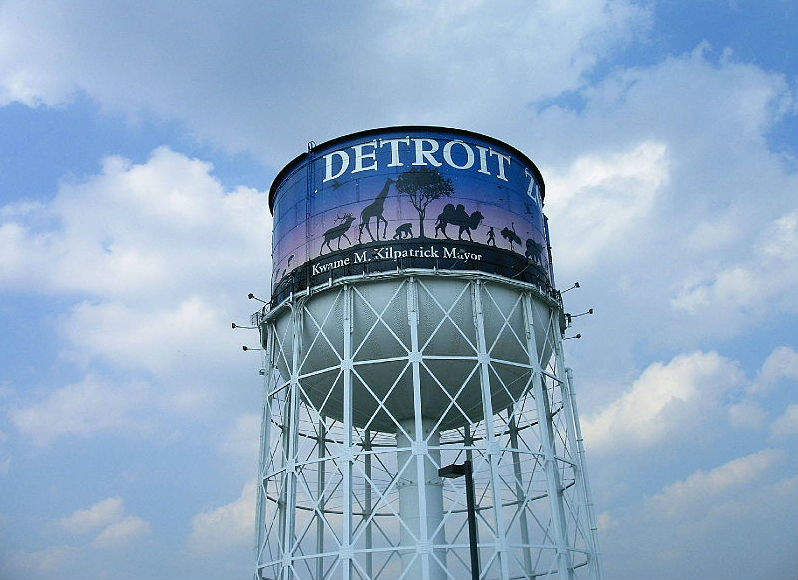

Detroit Zoo has kicked the New Year off with a clean start, and has shifted to exclusively using renewable energy for all its operations. It is the first zoo in the US to earn verification by Green-e Marketplace, which certifies organisations that are reducing their greenhouse gas emissions. This means that the zoo now uses 100% Green-e certified wind energy sourced from US wind farms, reducing its environmental impact significantly.
The zoo, with 125 acres of naturalistic habitat in Royal Oak, Detroit, purchased enough megawatt-hours (Mwh) of renewable energy certificates (RECs) to offset the current electricity use at the zoo, and if its energy needs increase or decrease, the amount of Mwh can be adjusted accordingly.
Renewable deals
Spokesperson for Detroit Zoo Patricia Janeway says that its commitment to sustainability is made possible through a donation from ITC Holdings Inc, so the facility incurs no costs. Detroit Zoo is currently unable to install large-scale wind turbines on site due to ongoing solar application processes and space limitations, but using RECs give the zoo the opportunity to show its support for renewables without incurring costs.
On the website, Detroit Zoo says: "These certificates show energy developers and our regulators that we demand renewable energy, which should in turn incentivize additional supply to the grid."
The contribution will support the zoo’s purchase of electricity through 2018. Janeway says that all the members of the zoo share a commitment to ‘environmental stewardship’.
"At the Detroit Zoo, we continue to look for ways to reduce our ecological footprint," she adds. "By purchasing RECs, we’re investing in renewable energy sources, which could drive demand higher. Our hope is to inspire others to look to clean, renewable energy sources."
A history of green principles
Last year, the zoo was named as the greenest in the US gaining a 2015 Green Award from the Association of Zoos & Aquariums. In December, it was also crowned the best managed non-profit organisation in south-east Michigan by the state’s top business magazine, Crain’s Detroit Business, due to its savvy business ideas while keeping a focus on the environment.
Some of the zoo’s other green initiatives have included influencing visitors to live a more sustainable life, and eliminating bottled water sales by replacing them with reusable water bottles at its concession stands. The zoo chose to stop selling plastic water bottles as they are the biggest contributor to plastic waste in the US. Tom Regan of Royal Oak’s Environmental Advisory Board said this helps raise public consciousness about the hidden costs to the environment in bottled water consumption. The site also has map recycling bins for customers to drop off maps that have been finished with.
In addition, 38 solar and electric-powered vehicles are used by zoo staff to carry equipment, tools and occasionally guests throughout the park. In 2012 it also completed a $2m energy-efficiency project that saw upgrades to lighting, mechanical equipment and controls, and water conservation which saves around 1,500t of carbon dioxide being emitted every year.
At any zoo, caring for the animals takes the majority of its electricity use, such as powering life systems – such as heat generators, cooling systems and special lights – that keep them comfortable and in the right conditions.
"We continue to improve our energy-efficiency measures so that they do not alter the comfort and safety of the animals," says Janeway.
Animal power and future plans
As well as gobbling up energy, these animals may soon be able to start giving some back. Many of the zoo’s animals, including the giraffes and rhinos, could make their own contributions to green power this year once a new bio-digester is developed.
In the early part of this year, the first zoo-based bio-digester will be coming online at Detroit Zoo, which will supply biogas from compost that can be used as an energy source for the animal hospital. The zoo continues to work on its Greenprint roadmap, which is a series of plans to improve facilities and daily practises, and develop new policies to make people in the community more aware of green energy choices. For example, the zoo holds annual electronic waste events where people can drop off unwanted monitors, printers and televisions.
Wind energy was chosen through a partnership with ITC, and Detroit Zoo is continuing to focus on expanding the onsite renewable energy sources, including developments in solar and geothermal energy.
In 2015, renewable energy accounted for nearly 10% of total electricity generation worldwide, and organisations such as Detroit Zoo are helping that number to increase. The 100% renewable label for the zoo is another big step on its green journey and is an incentive to develop even more creative ideas and green initiatives.



